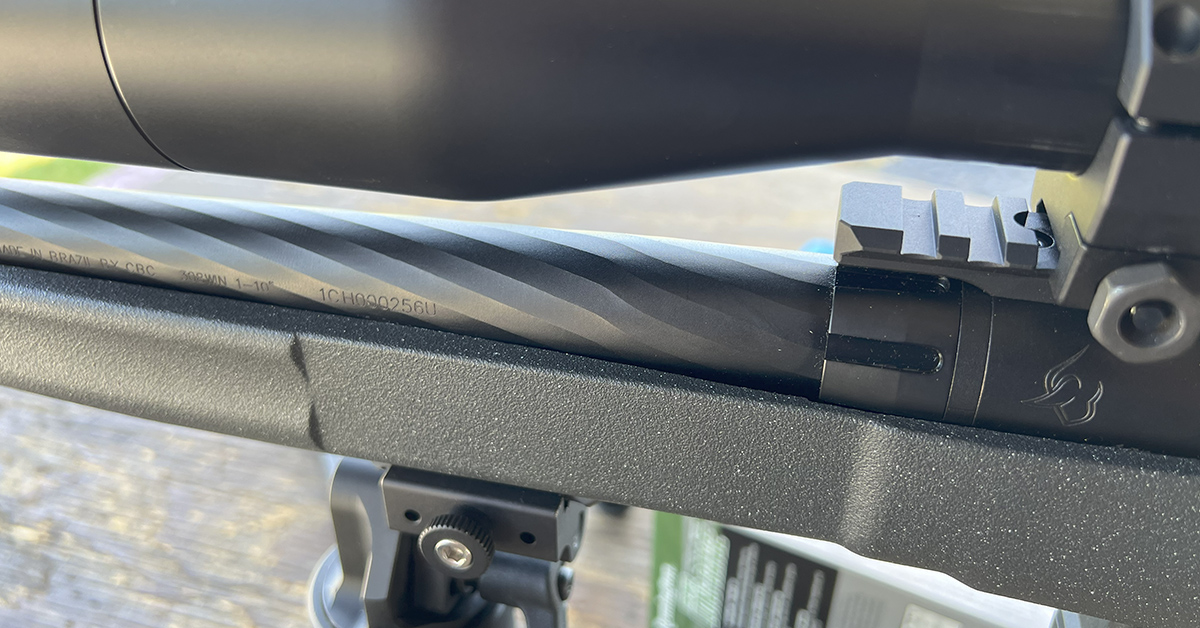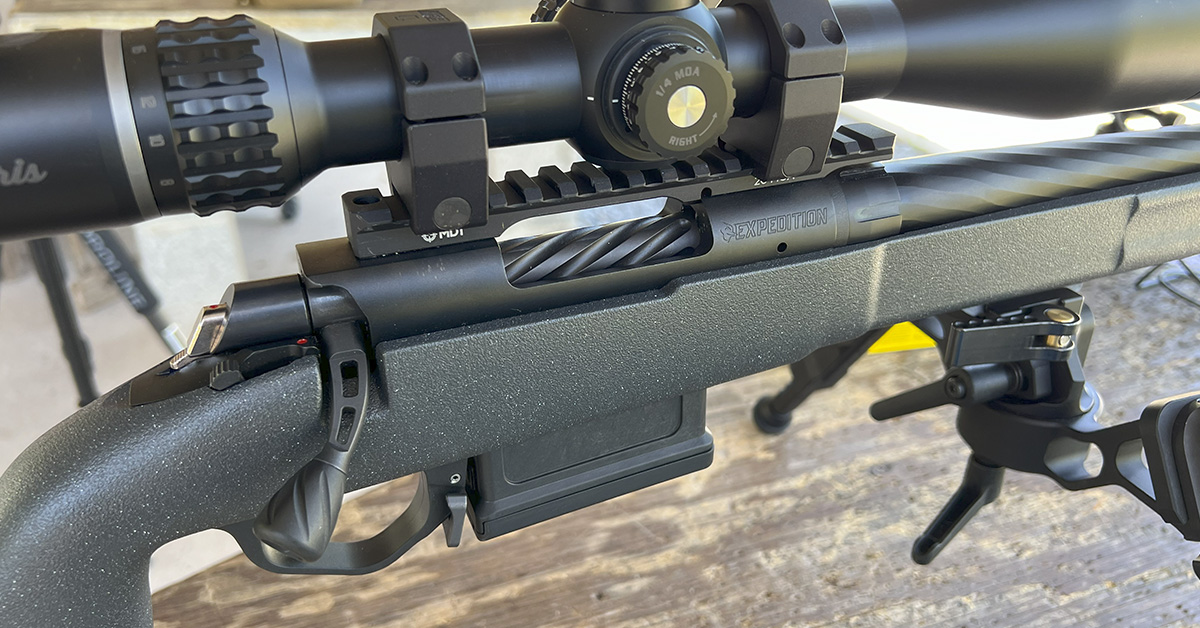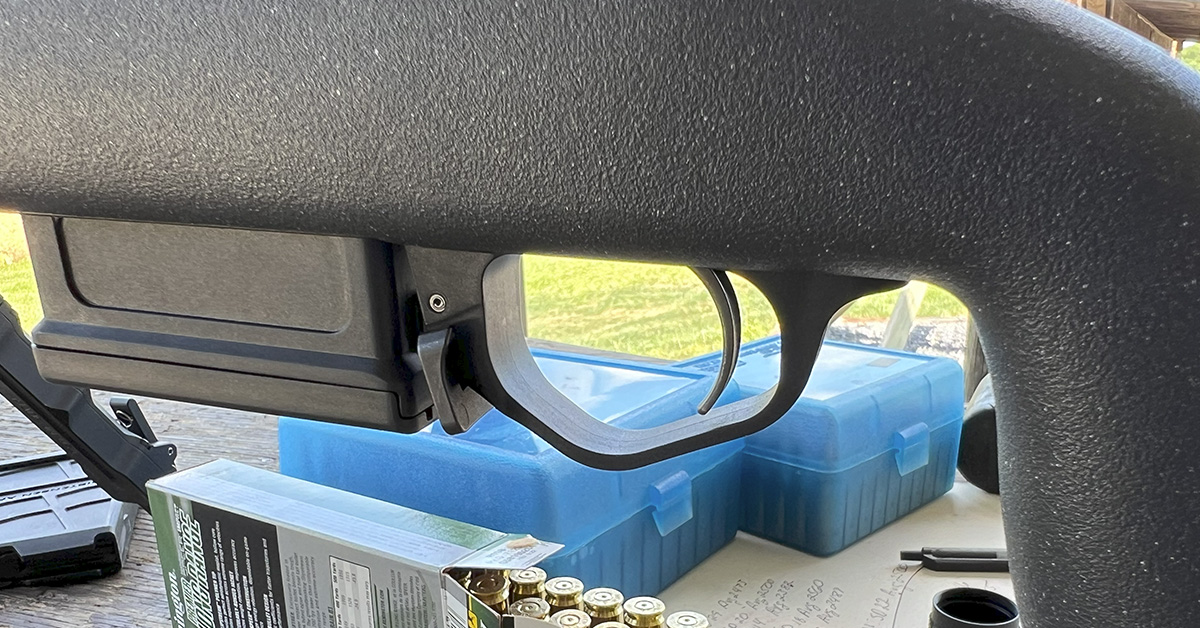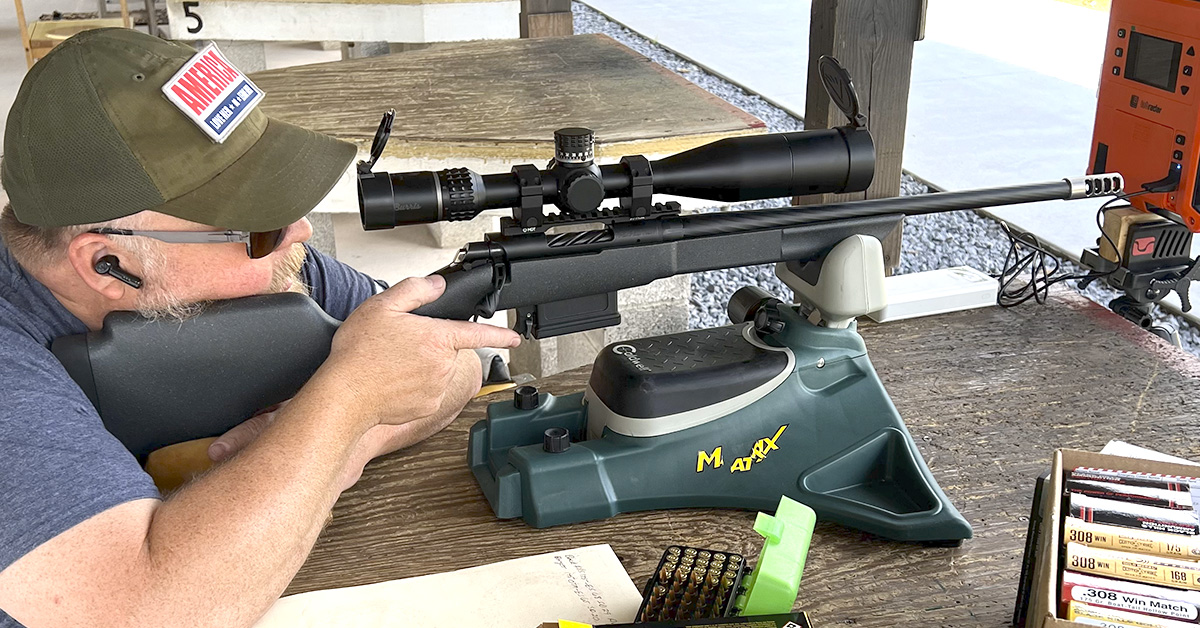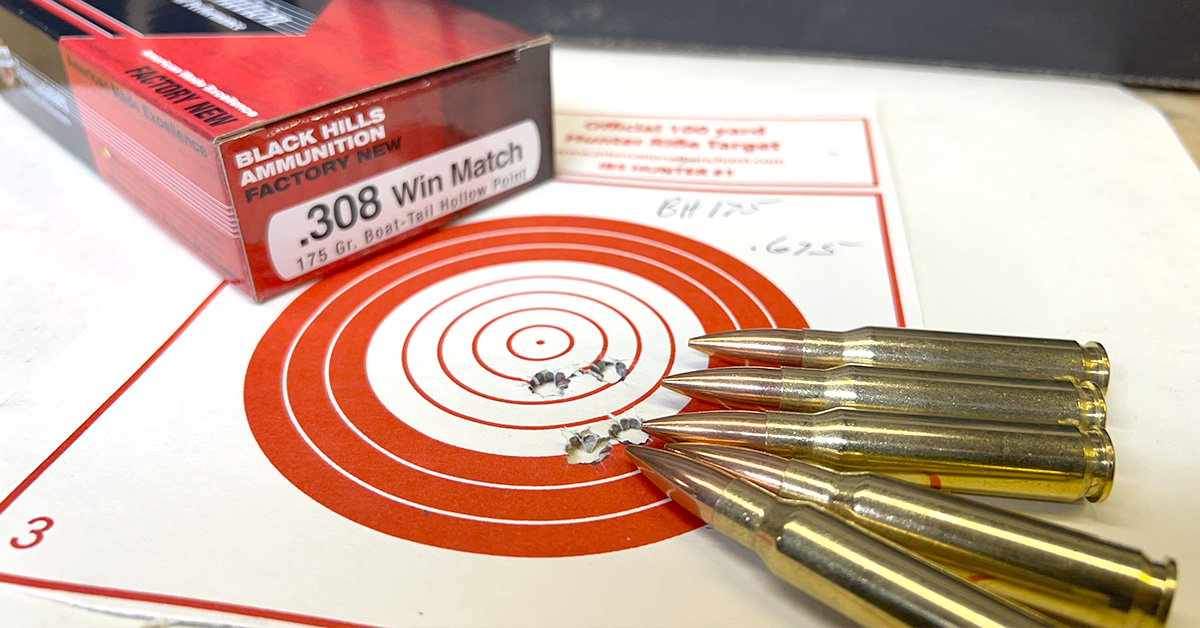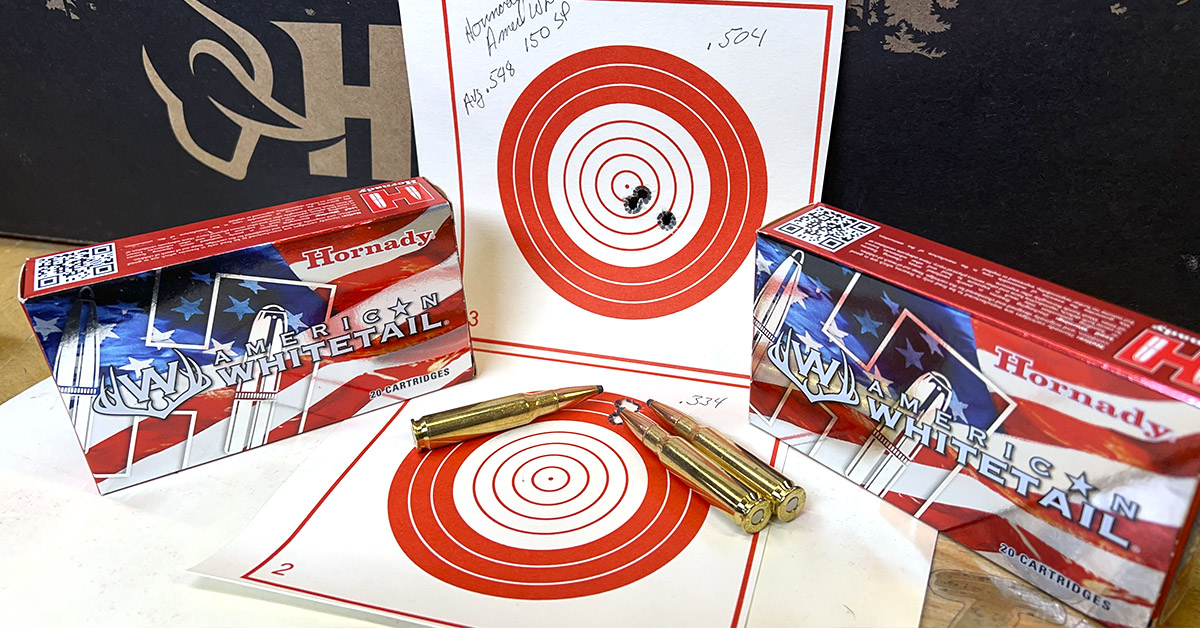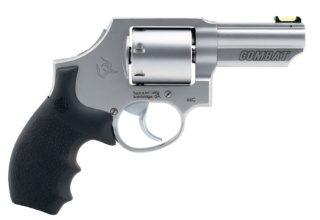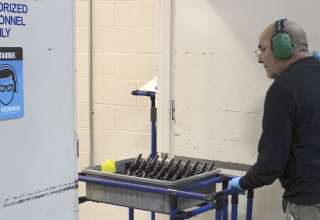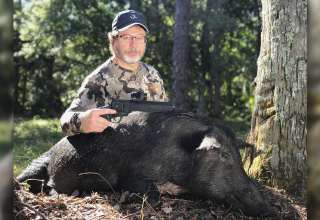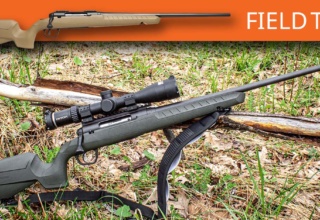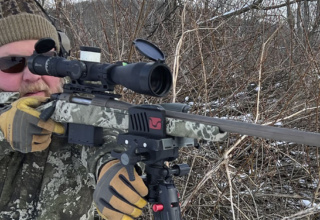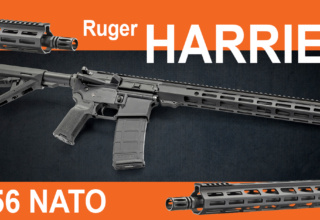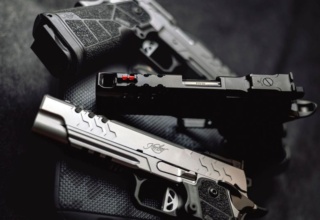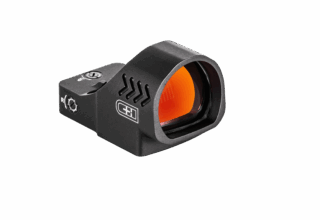Anyone breaking into any market where there are so many more manufacturers before you can be a daunting task, yet Taurus has conquered that obstacle with the new Taurus Expedition bolt-action rifle
by Jeromy Knepp
“The Taurus Expedition, the first bolt action rifle from Taurus USA, is designed by hunters, built for hunters, and ready for your biggest adventure” – Taurus
The above statement holds true in my estimation. Taurus has entered a market flooded with rifles boasting years of tradition and proven design behind them. Coming out with something new to appeal to hunters loyal to specific brands can be difficult. To tempt new converts, Taurus went with proven cartridges in an 18-inch .308 Winchester (tested) and a 20-inch 6.5 Creedmoor for the Expedition debut.
Taurus engineers considered the multiple ways hunters approach stabilizing their rifles in the field and so included a couple mounting point options. These include two ample-length M-LOK slots along with a Spartan Precision attachment point. Thinking ahead, the designers also molded in two scalloped spots on both sides of the forearm to allow for a positive clamping position when using saddle-style tripods. Taurus decided to forgo the traditional hunter-style stock, opting instead for an injection molded stock with a pistol grip design and a higher cheek rest. Helping with accuracy and action stability are aluminum pillars to provide a solid bedding surface. The “bottom metal” is made of polymer and is of a one-piece design. The trigger guard is designed with an oversized guard, allowing easier access to the trigger with gloved fingers.
Stainless Steel?
Who makes their first rifle with stainless steel? Well, Taurus. Coming into the market required thinking out of the box, and producing a rifle action, barrel, and bolt in stainless steel makes a great first impression. Created around the Remington Model 700 SA design provides many scope base options. Add in a matte finish BDC (Black Diamond Coating) to withstand tough environments and to minimize glare and the result is a barreled action that is ready for hard field use and that looks good doing it.
The Barrel
Taurus opted for a hammer-forged stainless-steel barrel. Unlike manufactures that choose to polish off the hammer marks, Taurus left them in for aesthetics. It provides a very cool spiral effect from the action to the muzzle crown. The muzzle is threaded 5/8-24 to fit most muzzle devices. Twisting on my Banish 30 suppressor and my three-port muzzle brake offered no challenges. Taurus does provide a thread protector should you choose to go full recoil.
The company chose a barrel nut design to secure the barrel to the action. This increasingly common design allows for a quick spin-up of a barrel for correct headspacing; it also helps to keep manufacturing costs down by not having to machine each individual barrel for exact headspace dimension. The recoil lug is a single-piece design.
Barrel break-in and clean up happened quickly. After the first 5-10 shots, I noticed a tight spot about two thirds of the way down the barrel. Cleaning after the 10-15 round mark, the tight spot went away. Not sure what would have caused that, but it’s not an issue. The barrel broke-in quickly. My particular barrel does not hold copper or carbon. Three to four wet patches using Lucas’ barrel solvent knocked the carbon right out. Using Shooters Choice for copper removal cleaned it up in one to two patches. After the first hundred rounds went down the barrel, cleaning was a breeze.
The Action
After shooting hundreds of rounds through this rifle, reliability and function ranked high on the list. Using both handloads and factory ammunition, it fed flawlessly from the provided polymer five-round AICS pattern magazine. Anything from pointy match ammunition to blunt nose hunting ammunition slid cleanly into the chamber. While shooting, I used both metal 10-round AICS mags and a Christensen Arms polymer mag without issue in this rifle.
The Expedition bolt comes loaded with features. Using a 60-degree throw allows for short lift of the bolt to load the next round. Beware of extraction! This thing flings brass to rival an AR-10. Using a double ejector design along with an M16-style extractor produces positive removal of fired casings. The first time running the bolt, a casing flew about six feet from the rifle. If you reload, you may want to master the catch-while-opening-the-action. A skeletonized bolt handle along with spiral fluting helps to keep things light.
The Trigger
The trigger is based on the Remington-style trigger. This sample broke between 3 lbs., 11 oz. and 4 lbs., 2 oz. Initially, the trigger felt good and crisp fresh out of the box; however, after a lot of bench time, I could feel a little creep. It wasn’t terrible and was very predictable. Shooting from the bench felt good with each pull of the trigger. I would like to see an adjustable option. Trigger options will be endless using a Mod 700 trigger group.
How Did It Shoot?
Without a muzzle device, the rifle does have some decent recoil. I would attribute this to its light weight and stock material. There is some flex in the forearm when under load, but not “springy” like some low dollar options out there. Using the Burris Veracity PH scope, MDT 20MOA one-piece base, and EGW 30mm medium height rings, the gun came in at nine pounds unloaded.
Shooting from a suppressor was comfortable and uneventful. For bench testing, I used a brake that I timed with a 5/8-inch crush washer. I used the Caldwell Matrix rest for all the target load options. For hunting ammunition, I opted for an Accu-Tac bipod for a more traditional set up for hunting conditions. All ammunition tests were fired from the bench at 100 yards. Target factory options were shot in three 5-shot groups. Hunting ammunition was shot in three 3-shot groups.
Barrel temperature was an issue as it was very hot and humid when shooting. Temps ranged from 86-92 degrees, taking a long time between barrel cool-downs. I will say that this barrel, after 10 consecutive shots, seemed to fall off a bit. Many of the groups showed a change in size after the 9-10 shot range when shooting the target ammunition. The first three shots of many of the target options would produce a 3-4 shot group measuring well under an inch. Testing the hunting ammunition was much easier as the temps were in the 78-85 degree range with a nice breeze aiding in cool-downs.
The best of the day for the target loads was the Black Hills 175-gr. BTHP with an average of .813 in. and a best group of .675 in.
The hunting load win goes to Hornady American Whitetail 150-gr. PSP with a .548-in. average and best group of .334 inches. One anomaly was the Berger 168-gr. VLD Hunting load. I shot a three-shot group that measured .159 inches! The next groups, though, went over an inch with one flyer each. Of the three copper bullet offerings, Remington’s Copper Core-Lokt 150-gr. HP averaged 1.077. G9 Defense’s new 145-gr. BTHP copper came in a close second at 1.155 inches.
Using the Remington Premium Speer Impact BT 172-gr. load, I stretched it out to 600 yards. I put seven shots in an 8-inch group shooting from a bipod on a bench.
Target Ammunition Results; Three 5-Shot Groups
- Black Hills 175-gr. BTHP (ES 68, SD 29, Avg. 2473 fps): Avg. .813 in.
- Berger 175-gr. BTHP VLD (ES 65, SD 20, Avg. 2500 fps): Avg. .983 in.
- Federal GM 168-gr. BTHP (ES 21, SD 8, Avg. 2486 fps): Avg. 1.053 in.
- Berger 185-gr. Juggernaut (ES 44, SD 14, Avg. 2382 fps): Avg. 1.146 in.
- Black Hills 168-gr. ELD-M (ES 67, SD 18, Avg. 2560 fps): Avg. 1.320 in.
- Remington Premier 168-gr. BTHP Match (ES 81, SD 22, Avg. 2500 fps): Avg. 1.483 in.
Hunting Ammunition Results Three 3-Shot Groups
- Hornady American Whitetail 150-gr. PSP (ES 72, SD 21, Avg. 2615 fps): Avg. .548 in.
- Remington Premier Speer 172-gr. Impact BT (ES 29, SD 10, Avg. 2573 fps): Avg. .836 in.
- Berger 168-gr. Classic Hunter BTHP VLD (ES 48, SD 13, Avg. 2446 fps): Avg. .940 in.
- Remington Core-Lokt 165-gr. Tipped (ES 34, SD 10, Avg. 2566 fps): Avg. 1.134 in.
- Hornady Precision Hunter 178-gr ELD-X (ES 23, SD 8, Avg. 2457 fps): Avg. 1.234 in.
- Remington Premier 165-gr Scirocco Swift (ES 73, SD 21, Avg. 2539 fps): Avg. 1.328 in.
- Remington Core-Lokt 150-gr. PSP (ES 63, SD 21, Avg. 2669 fps): Avg. 1.623 in.
Hunting Ammunition, Copper, Three 3-Shot Groups
- Remington Core-Lokt 150-gr. Copper HP (ES 37, SD 11, Avg. 2710 fps): Avg. 1.077 in.
- G9 Defense 145-gr. Barrier Blind HP (ES 97, SD 28, Avg. 2772 fps): Avg. 1.155 in.
- Hornady Superformance 150-gr. CX (ES 64, SD 17, Avg. 2755 fps): Avg. 3.831 in.
On Target
Taurus gets a “Rifle Rookie of the Year” award with the Expedition. Sound thinking in design and factory options have given the rifle a good starting point to grown on. The action is solid and smooth. Using the Rem. 700 SA pattern will allow many stock and trigger upgrade options. Or, keep it as it is, because it’s a great factory rifle.
Off the Mark
Like I discussed earlier, the trigger has some creep. I would like to see a full two-stage or a crisp single-stage. An adjustable trigger weight option would be a solid upgrade. The stock, though a great entry level product, is still plastic. I favor some stiffening up of the forearm to remove that slight flex. Also, not a fan of the polymer “bottom metal.” I could see that causing some issues with keeping a good torque on the action screws.
Final Thoughts
Call me impressed. With an MSRP of $984.99, this rifle and all its factory options can be had for retail between $819 to as low as $636, depending on the dealer. I would say the average will be somewhere around $750. At that price, you get a lot of rifle for your money.
Well done, Taurus.
- FIELD TEST: Savage Axis 2 - July 25, 2025
- TESTED: CVA Cascade Varmint Hunter - February 24, 2025
- TESTED: Taurus Expedition Bolt-Action Rifle - August 27, 2024


